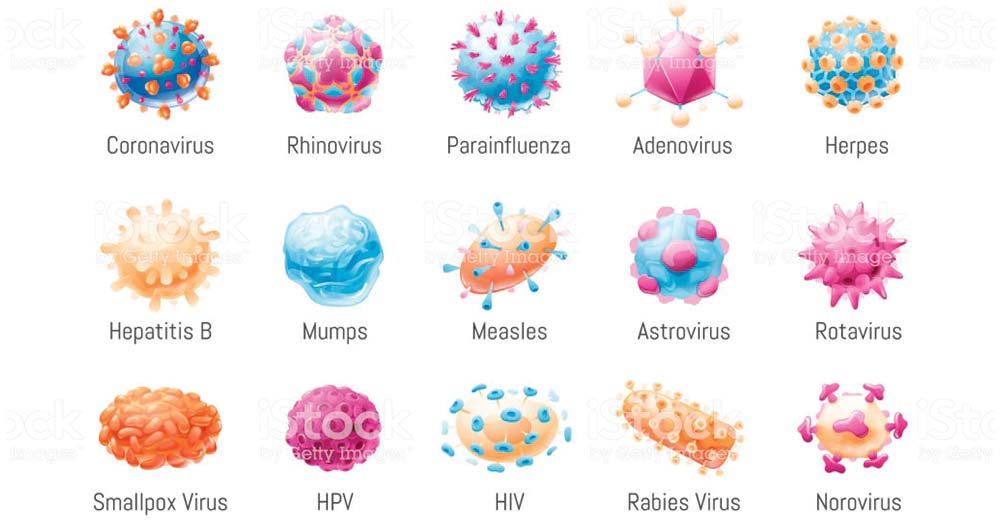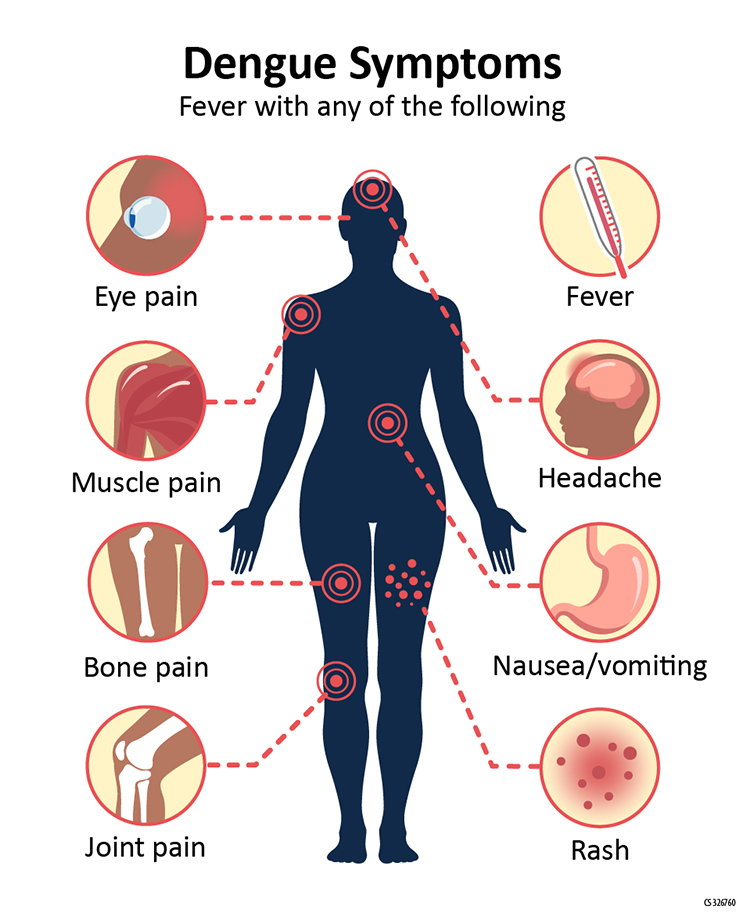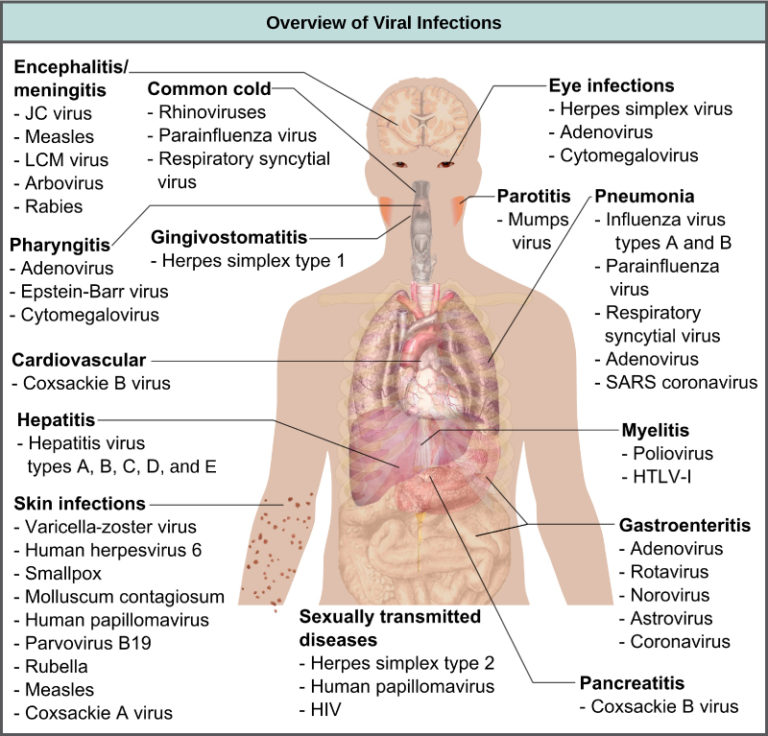Viral diseases Study Guide
Introduction:
Viruses are infectious unicellular microorganisms with genetic material like DNA or RNA, surrounded by a protein coat. A viral disease is caused when a pathogenic virus infects and proliferates inside a host organism and damages its immune system. There are many types of virus infections, based on the organs infected, types of viruses, mode of transmission, etc. Viral diseases are commonly contagious and cause a variety of symptoms.
Disease Transmission
- Directly consuming virus-contaminated food and water.
- Inhaling air-borne virus droplet particles.
- Spread of virus particles through body fluids either directly or indirectly.
- Sexual transmission by sexual contact with a virus-infected person.
- Indirect transmission from virus-infected individuals through mosquito bites, ticks, fleas, rats, etc.
Virus Infection: Symptoms
The symptoms of viral infection depends on the type of virus causing the infection, the organs infected, the age of the infected person and other predisposing factors.
Common viral symptoms are listed as follows:
- Gastrointestinal problems include diarrhea, vomiting, nausea, abdominal pain, etc.
- Respiratory symptoms include cough, cold, nasal congestion, sneezing, sore throat, etc.
- Flu-like symptoms include nausea, fever, pain in the body, etc.
- Malaise which is a general ill feeling
- Swollen tonsils
- Rash, sores, or itching is on a particular body part.
- Seizures
- Impaired bowel functioning.
- Loss of sensation or paralysis.
- Chills
- Muscle aches
- Shortness of breath
- Stiffness in neck
- Jaundice or yellowing of the eyes and skin
- Pain in the chest
Types of viral infection
- Smallpox: is caused by the variola virus and spreads by inhaling droplets containing virus particles. Symptoms include fever, severe fatigue, vomiting, back pain, and red blisters on the face, arms, and trunk, which turn into fluid-filled pus blisters, scabs, and deeply pitted scars.
- Common cold: is caused by the influenza B or C virus and spreads by touch, droplet infection, etc. Symptoms include fever, runny nose, sore throat, headache, coughing, sneezing, fatigue, etc. Severe symptoms include vomiting and pneumonia, possibly followed by a bacterial infection of the lungs.
- Chickenpox: is caused by the varicella zoster virus. Symptoms include an itchy blister rash which turns into fluid-filled blisters, which inturn develops into scabs and crusts after several days. Other symptoms are fever, headache, tiredness, loss of appetite, etc.
- Measles: or rubeola, is caused by the measles virus. Symptoms are fever of 104 degrees Fahrenheit, runny nose, inflamed eyes, red and flat rash on the face and other parts of the body, diarrhea, middle ear infections, and pneumonia. It spreads by air droplets or direct contact.
- Hepatitis: is caused by hepatitis A, B, C, D, or E viruses. The common symptom is inflammation of the liver and yellowing skin and eyes. The other symptoms are dark urine, abdominal pain, weight loss, loss of appetite, etc.
- The Human Papilloma Virus causes a sexually transmitted infection.
- Herpes Simplex virus type 1 or type 2 causes genital herpes characterized by itching, genital sores, and swollen lymph nodes.
- Polio is caused by the poliomyelitis virus, which is a disabling disease leading to paralysis after spinal cord infection.
- Rabies: is caused by the rabies virus and spreads if bitten by infected dogs, bats, rats, or contact with infected saliva. Symptoms are inflammation of the brain, violent movements, fever, fear of water, etc.
- Human Immunodeficiency Virus (HIV) causes Acquired Immunodeficiency disease syndrome (AIDS), which affects the immune system and spreads by sexual contact with an infected person or through transfusion of infected blood and other human liquids.
- Ebola virus causes hemorrhagic fever.
- SARS or Severe Acute Respiratory Syndrome virus
- The Epstein-Barr virus causes infectious Mononucleosis.
- Rotavirus causes viral gastroenteritis.
- Chikungunya virus causes fever and joint pain.
- Hantavirus causes Hantavirus Pulmonary Syndrome.
- Coxsackievirus causes hand, foot, and mouth diseases.
- Adenoviruses cause Pink eye syndrome(conjunctivitis), pneumonia, bronchitis, fever, sore throat, etc.
- Dengue virus(DENV) causes hemorrhagic dengue fever, drop in blood pressure, pain in the joints, etc.
- Flavivirus causes yellow fever, characterized by jaundice, kidney failure, liver failure, abdominal pain, vomiting, etc.
Treatment of Viral Diseases
- General allopathic drugs like Ibuprofen, Acetaminophen, Peramivir, Baloxavir, Acyclovir, Adefovir, anti-retroviral drugs like Oseltamivir, Zanamivir, etc., are used in the treatment of viral infections
- Vaccines play a huge role in preventing disease, as well as reducing incidence and intensity of disease:
- Vaccines provide acquired immunity against specific viral diseases
- Vaccines are made up of a weaker form of the disease-causing agent, and allows for the immune system to recognize, destroy, and remember this agent
- This in turn, prevents future infection by the more dangerous version!
It is important to immunize the larger population to prevent pandemics and further evolution of disease-causing viruses.
Conclusion:
- The spread of viral diseases can be considerably reduced if proper hygienic conditions are maintained.
- These inlcude frequent hand washing, avoiding sexual contact with infected individuals, avoiding touching the mouth, eyes, etc. with dirty hands.
- Maximum care of covering the mouth during sneezing, coughing, etc. should be take when infected with a virus.
FAQs:
1. Name some viral diseases
Some viral diseases are measles, rubella, chickenpox, smallpox, roseola, etc.
2. Which is a common viral disease?
The common cold is the most common viral disease caused by the influenza virus infecting the upper respiratory tract of humans.
3. What is the definition of viral disease?
Viral disease or viral infection occurs when a pathogenic virus invades an organism’s body and virions or infectious viral particles attack and take over the susceptible cells.
4. How many viral diseases are there?
There are 219 viruses that infect human beings.
5. What are the 10 most common diseases?
They are Flu, Herpes, Mumps, Chickenpox, measles, rubella, Human Immunodeficiency Virus(HIV) or AIDS, Human Papilloma Virus(HPV), Hepatitis, etc.
6. What are the 4 types of diseases?
The four types of diseases are:
- Infectious diseases
- Physiological diseases
- Deficiency diseases
- Hereditary diseases
7. Is polio a virus?
Polio or poliomyelitis is a disabling disease caused by the poliovirus.
8. Is chickenpox a virus?
Yes, chickenpox is caused by the varicella zoster virus.
9. Is ebola a virus?
Yes, the ebola virus causes ebola virus disease.
10. Name 20 communicable diseases.
- Flu or the common cold
- Ebola virus disease
- AIDS
- COVID
- Hand foot and mouth disease
- Viral meningitis
- Hepatitis A infection
- Hepatitis B infection
- Hepatitis C infection
- Measles
- Mumps
- Chickenpox infection
- Pertussis
- Hantavirus pulmonary syndrome caused by the hantavirus
- West Nile virus infection
- Zika virus infection
- Rabies infection caused by the rabies virus
- Yellow fever caused by the flavivirus
- Chikungunya virus infection
- Encephalitis infection
We hope you enjoyed studying this lesson and learned something cool about Viral Diseases! Join our Discord community to get any questions you may have answered and to engage with other students just like you! Don’t forget to download our App to experience our fun, VR classrooms – we promise, it makes studying much more fun! 😎
Sources:
- Viral Diseasehttps://flexbooks.ck12.org/cbook/ck-12-biology-flexbook-2.0/section/7.14/primary/lesson/viruses-and-human-disease-bio/ Accessed on 8 Dec 2021
- Infectious Diseases – A to Z Listhttps://health.ri.gov/diseases/infectious/ Accessed on 8 Dec 2021
- Viral Diseaseshttps://www.healthgrades.com/right-care/infections-and-contagious-diseases/viral-diseases Accessed on 8 Dec 2021
- VIRAL INFECTIONS: TYPES, TREATMENT, AND PREVENTIONhttps://www.narayanahealth.org/blog/viral-infections-types-treatment-and-prevention/ Accessed on 8 Dec 2021




